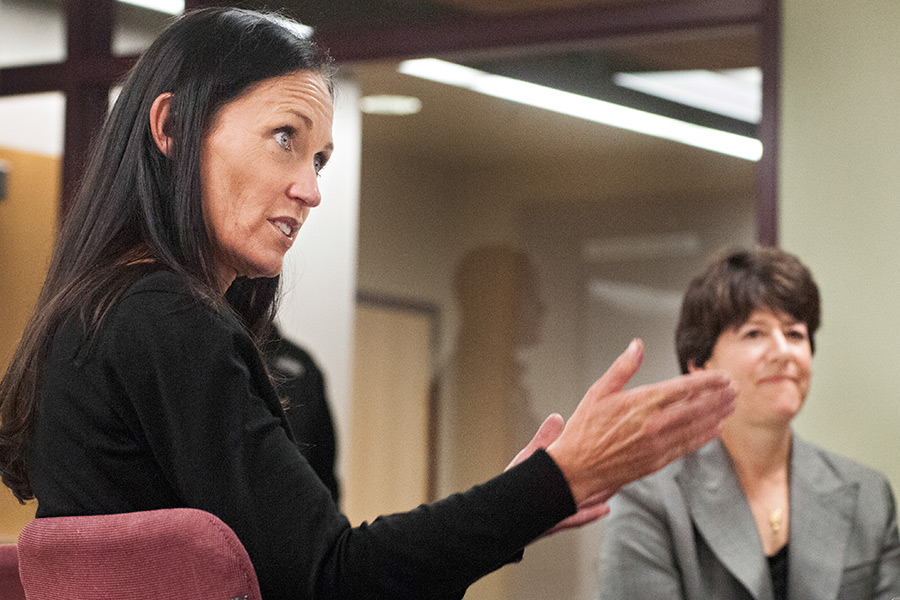Montana Lt. Gov. Angela McLean and the state’s commissioner of higher education visited the Flathead Valley Community College campus in Kalispell last week, touting the school’s dual enrollment program.
The program allows high school seniors to take classes that count for high school and college credit, and FVCC is at the forefront of this type of program in Montana.
“Flathead Valley Community College is truly a leader in our state and in our country,” Montana University System Commissioner of Higher Education Clayton Christian said. “Others are trying to emulate this school.”
Dual enrollment helps keep students on track to graduate high school, McLean said, and it helps propel them to a successful college career because it allows for access and college affordability.
At FVCC, the first six credits of dual enrollment are free, she said. If a student already has momentum heading into their college career, there’s more of a chance they’ll see it through, and it will help them get their degree faster.
Reducing the time it takes to get a degree is key in affordability, both McLean and Christian said.
McLean became Montana’s lieutenant governor after Gov. Steve Bullock appointed her in February 2014. Prior to the appointment, McLean worked as a teacher, an adjunct professor and was the chair of the Montana Board of Regents.
She spent 15 years teaching dual enrollment, and believes it is an effective tool for both teachers and students. With that in mind, she was excited to work on the Dual Credit Incentive Program, which offers teachers credit-for-credit coupons for teaching dual enrollment classes.
Those coupons translate to cover the cost of undergraduate and graduate tuition at any in-state public college, university or tribal college. If the teacher doesn’t need the credit, they can transfer the coupon to a child, a student or a friend.
“It’s the single most robust effort to grow dual enrollment,” McLean said.
FVCC has a solid dual enrollment program, she said, and the college has also responded with speed and alacrity to the need for new programs to educate the local workforce.
The college has added myriad programs in the past few years after collaborating with local business leaders about what types of skills are needed, so those businesses can hire local grads instead of importing talent.
“That’s how it should be,” Christian said.
McLean said FVCC President Jane Karas is a major reason the college has been so nimble in its response to the educational needs of a diverse workforce after the recession hit the valley.
“It’s really exciting to see,” McLean said.
Christian noted that when colleges collaborate like this, it helps the local economy as a whole. Across the state, about 88 percent of graduates in health care programs at two-year colleges find work in the state within a year; and about 80 percent of all two-year program graduates are working instate in a year.
McLean said her goal as lieutenant governor is to promote educational success, from the earliest stages to graduation and beyond.
“The governor and I continue to make education our single top priority,” she said.
